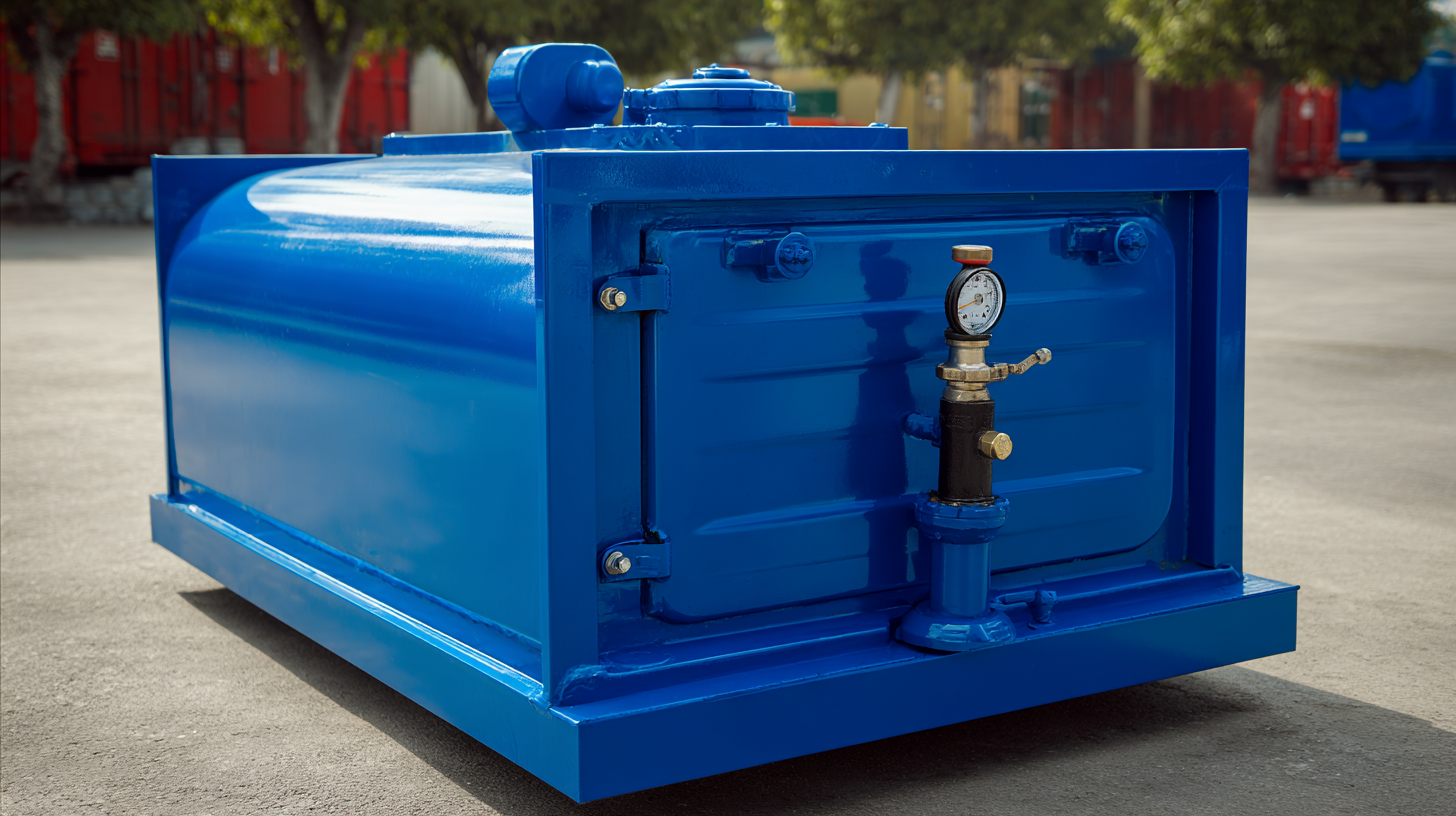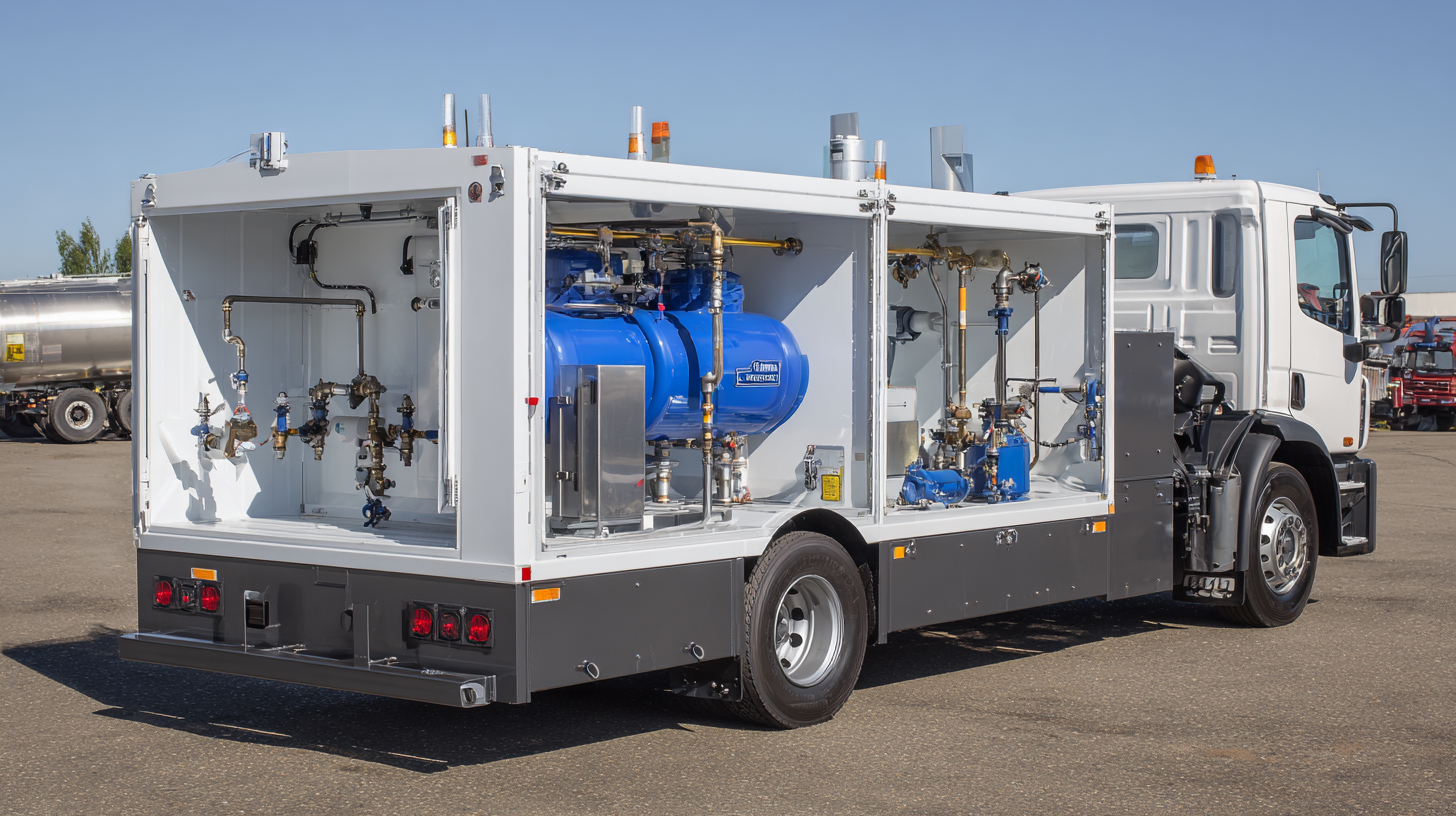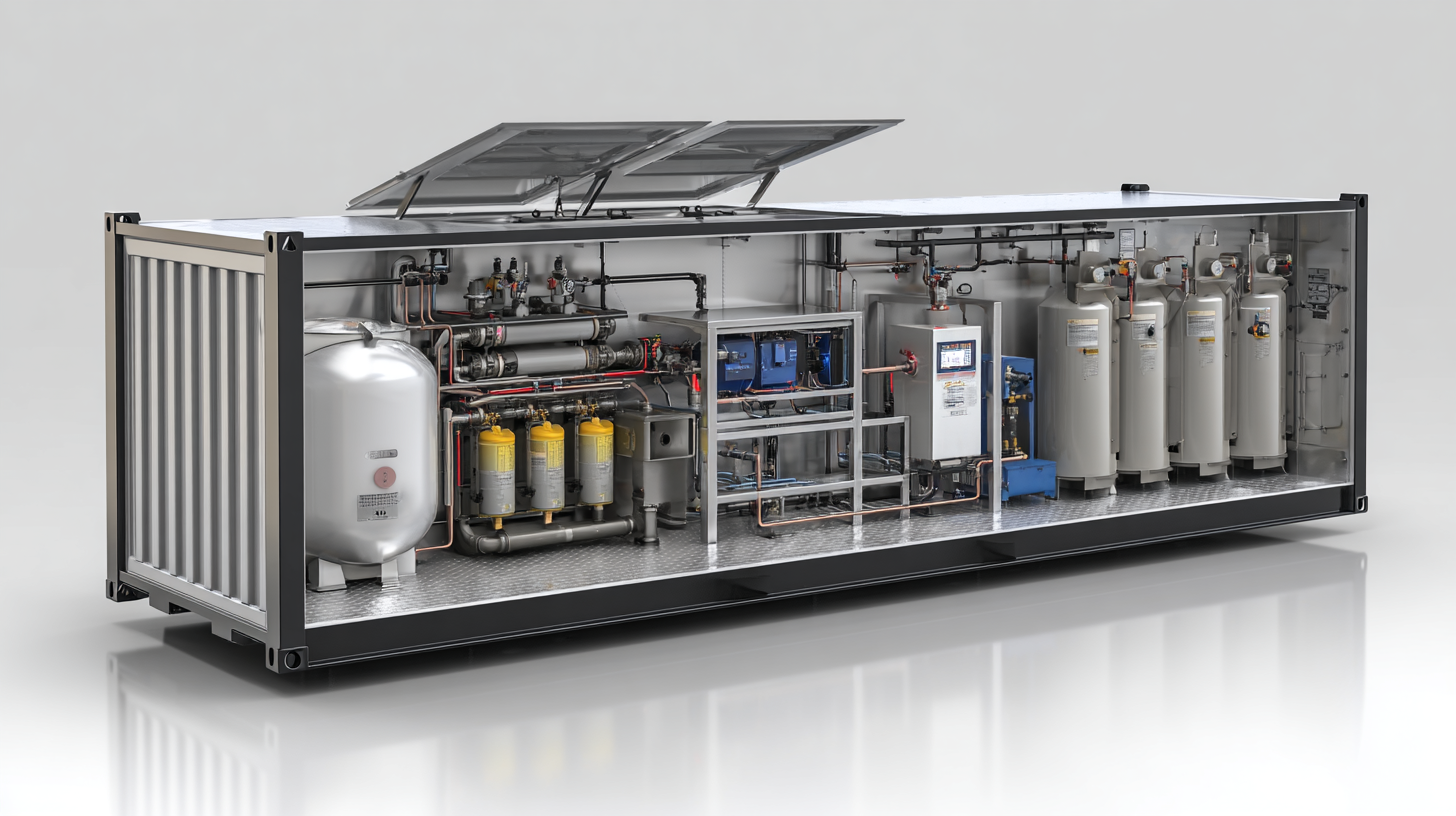How to Choose the Right Fuel Transfer Tank with Pump for Your Needs
In the ever-evolving world of fuel management, selecting the right fuel transfer tank with pump is critical for efficiency and safety. Recent industry reports indicate that improper fuel handling can lead to significant economic losses, with the fuel distribution market projected to reach over $600 billion by 2025, highlighting the need for effective solutions in this sector.

As businesses grapple with rising fuel costs and stringent regulatory compliance, the right fuel transfer tank with pump becomes an essential investment, facilitating efficient fuel delivery while minimizing risks associated with spills and leaks. Understanding your specific needs, whether for commercial fleets or agricultural machinery, can greatly influence your choice, ensuring optimal performance and reliability in diverse operating conditions.
Understand Your Fuel Transfer Requirements and Usage Scenarios
When selecting the right fuel transfer tank with a pump, understanding your fuel transfer requirements and usage scenarios is crucial. According to a report by the National Association of Container Distributors, roughly 80% of small to medium-sized businesses relying on fuel transfer systems have indicated that operational efficiency and compliance with safety standards are their top priorities. This highlights the need to assess not only the volume of fuel required but also the frequency of transfers and the specific environments in which the tank will be used.
For instance, if your operations involve transferring fuel on construction sites or remote locations, a tank with a pump that features robust portability and quick-connect fittings may be essential. The 2022 Fuel Transfer System Market Analysis reports that portable tanks are increasingly favored for their ease of transport, making them suitable for a variety of applications. Additionally, understanding the potential regulatory requirements for fueling operations in your area can guide your choice, as specific tanks are designed to meet safety standards and mitigate risks associated with fuel handling. Tailoring your selection to fit both your operational needs and regulatory obligations ensures that you maximize efficiency while maintaining safety.

Evaluate Different Types of Fuel Transfer Tanks Available in the Market
When evaluating different types of fuel transfer tanks available in the market, several factors come into play, including the intended use, capacity, materials, and safety features. Various designs cater to specific needs, from compact tanks suitable for personal vehicles to larger, industrial-grade tanks designed for heavy-duty applications. Understanding the specifications of these tanks, such as their resistance to corrosion and pressure, is crucial, particularly when dealing with fuels that require stringent safety measures.
Additionally, developments in fuel storage technologies, especially for alternative fuels like hydrogen, should be considered. While traditional fuel transfer tanks have been the standard, the shift towards hydrogen for decarbonizing transportation has introduced new requirements for storage solutions. The design and engineering of these tanks must address unique challenges, such as operational pressure variations and the effects of potential accident scenarios. Prospective buyers should assess tanks based on their specific operational environments, safety certifications, and compatibility with modern refueling systems to ensure efficiency and compliance with regulatory standards.
How to Choose the Right Fuel Transfer Tank with Pump for Your Needs
| Tank Type | Capacity (Gallons) | Material | Pump Type | Price Range ($) | Best Use Case |
|---|---|---|---|---|---|
| Portable Transfer Tank | 20 - 110 | Steel / Plastic | Electric / Manual | 150 - 500 | Transportation & Job Sites |
| Stationary Fuel Tank | 100 - 1000 | Steel | Electric | 500 - 2000 | Farms & Construction Sites |
| Combination Tank | 30 - 200 | Steel / Aluminum | Electric / Manual | 300 - 1200 | Multiple Fuel Types |
| Gravity Feed Tank | 30 - 100 | Plastic | N/A | 100 - 400 | Small Equipment Refueling |
Consider the Pump Specifications and Compatibility with Your Tank
When selecting a fuel transfer tank with a pump, understanding pump specifications is crucial. The pump's flow rate, typically measured in gallons per minute (GPM), determines how quickly you can transfer fuel. It's essential to match the pump's GPM with your application's requirements, as higher flow rates may speed up the process but could also lead to spillage or pressure issues if the tank isn't equipped to handle them. Additionally, pump type—whether submersible or centrifugal—will influence efficiency and ease of use.
Compatibility between the pump and the tank is another key consideration. Ensure that the pump's inlet and outlet sizes correspond with the tank's fittings to prevent leaks and ensure effective fuel delivery. Moreover, examine the materials used in the pump construction. Choosing a pump made from durable, corrosion-resistant materials is vital, especially when dealing with various types of fuel, including diesel, gasoline, or biofuels. By focusing on these specifications, you can ensure a seamless integration of the pump with your transfer tank, leading to safer and more efficient fuel handling.
Fuel Transfer Tank Pump Specifications Comparison
This chart illustrates various flow rates of different fuel transfer pumps. Understanding these specifications is crucial for selecting the right fuel transfer tank with a compatible pump for your specific needs.
Assess Safety Features and Regulatory Compliance Standards
When selecting a fuel transfer tank with a pump, one critical aspect to consider is the safety features and regulatory compliance standards. Recent EU regulations emphasize stringent safety management practices, reiterating the importance of adhering to the General Product Safety Regulation. Companies must ensure that their fuel transfer systems not only meet current compliance standards but also integrate safety features that minimize risks associated with fuel handling. According to industry reports, implementing robust safety protocols can significantly reduce incidents, leading to enhanced workplace safety and operational efficiency.

Tips: Always verify that the tank is compliant with the latest regulations, such as the NIS 2 Directive, which covers the security of digital services and infrastructure. Additionally, look for features like overflow protection and security locks that prevent unauthorized access. Regular safety audits and product recalls should also be part of your risk management plan to address any safety issues swiftly.
Moreover, as highlighted by Canada's evolving safety framework for connected vehicles, innovation in design and technology plays a pivotal role in enhancing safety in fuel transfer systems. Choosing a tank designed with these regulatory standards in mind not only satisfies legal obligations but also enhances the reputation and reliability of your operations. Consider tanks that incorporate advanced monitoring systems to track performance and safety compliance effectively.
Review Portability and Installation Options for Convenience and Efficiency
When selecting the right fuel transfer tank with pump, portability and installation options play a crucial role in ensuring convenience and efficiency. A portable tank allows you to easily transport fuel to different locations, making it ideal for those who require mobility, such as contractors or agricultural workers. Look for tanks equipped with secure handles or wheels that facilitate movement without risking spills or leaks. Additionally, consider the weight of the tank when full; lighter models may be more manageable and user-friendly for frequent transportation.
Installation options are equally significant, as they can impact how efficiently the system operates. Many tanks offer various mounting options, including permanent, semi-permanent, or mobile setups. A permanent installation can provide stability and ease of access, whereas mobile tanks lend themselves to versatility, allowing users to adapt to various job sites easily. It's essential to assess your operating environment and determine the best installation type that aligns with your workflow, ensuring that you can quickly and safely transfer fuel without unnecessary downtime.
Related Posts
-

7 Reasons to Choose a Diesel Transfer Tank with Pump for Your Business
-

Unlocking Efficiency: The Advantages of Advanced Fuel Storage Tanks for Your Business
-

Ultimate Guide to Selecting the Right Fuel Transfer Tank with Pump: Expert Insights and Industry Standards
-

How to Choose the Right Fuel Transfer Tank with Pump for Your Needs
-

Progressive Cavity Pumps Exposed: A Comprehensive Comparison of Efficiency and Cost-Effectiveness
-

How to Choose the Right Double Diaphragm Pump for Your Application